July 14, 2023
Covering an area of 150,693 hectares on the Kampar Peninsula and nearby Padang Island, Restorasi Ekosistem Riau (RER) is a vital biodiversity hub, home to ecologically important peat forest areas and a wealth of flora and fauna. In addition to conservation and reforestation activities, this area offers a valuable opportunity to study the natural world. Through research and collaboration, RER is helping to reveal the many natural wonders of Indonesia’s remaining forests, while also developing strategies for their protection.
Tropical peatland swamps are notoriously difficult to access. The challenges associated with navigating, mapping and exploring these habitats makes them some of the least-studied ecosystems in the world. And yet, the remoteness of these areas enables biodiversity to thrive in isolation and abundance. Cognizant of the important lessons these areas have to teach, RER created a cutting-edge eco-research facility in the heart of the Kampar Peninsula.
Tropical Peatland Science Hub
Located four hours’ drive from Pangkalan Kerinci, close to the RER restoration area on the Kampar Peninsula in Riau, the Eco-Research Camp provides a foothold in the forest for visiting scientists. Here, experts, academics and conservationists converge to study the biodiversity at their doorstep, conduct wildlife surveys and participate in restoration efforts.
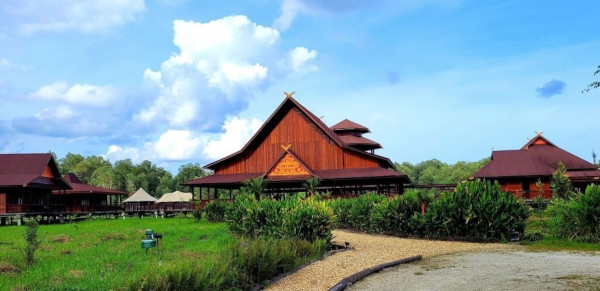
The RER project covers an area twice the size of Singapore. The strategic location of the Eco-Research Camp helps visitors get to grips with the challenge of managing a landscape of this size and complexity. But how is biodiversity measured? Working together with partners and collaborators, monitoring activities range from camera trap installation to bird watching and forest restoration. The camp is also home to a number of native tree nurseries, which are the nucleus of replanting efforts.
Partnerships & Collaborations
The Eco-Research Camp provides an ideal platform for knowledge sharing and partnerships between organizations. Back in 2015, RER teamed up with Fauna & Flora International (FFI) to develop a management framework for the forest and begin a large-scale biodiversity assessment. This collaboration fostered a series of surveys by FFI field teams, who produced a comprehensive inventory of species that included mammals, birds, reptiles and amphibians.
Since then, RER has continued to build on the initial FFI biodiversity assessments, utilizing a range of monitoring strategies to reveal the full extent of biodiversity on the Kampar Peninsula and Padang Island. These efforts have uncovered some fascinating results. Camera traps in particular have been a valuable tool for documenting rare and illusive species such as the flat-headed cat (Prionailurus planiceps) and the blue-winged pitta (Pitta moluccensis), which were identified for the first time by the surveys.
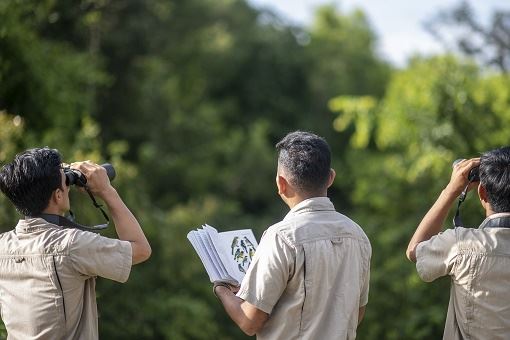
The Importance of Biodiversity Surveys and Conservation
Continuous monitoring of the RER area has identified a total of 846 plant and animal species per December 2022. This includes 78 different kinds of mammals, 106 amphibians and reptiles, 317 birds, 198 plants, 89 fish, and 58 odonata (an order of flying insects that includes dragonflies and damselflies). Of all the species identified thus far, 13 are listed as Critically Endangered by the International Union for Conservation of Nature (IUCN), while a further 22 are Endangered and 37 are Vulnerable to extinction. In total, 118 species are featured in the Convention on International Trade in Endangered Species (CITES) and 101 listed in Government of Indonesia lists of protected species of plants and animals.
This makes RER a vital refuge for some of Indonesia’s most endangered species. For scientists, the Eco-Research Camp is an essential tool in assessing the indicators of biodiversity; since its establishment in 2020, the camp has provided a platform for numerous wildlife surveys:
2015 and 2021 | Baseline Biodiversity Surveys
In 2015 and again 2021, Fauna & Flora International (FFI) conducted the first intensive baseline biodiversity surveys of the 130,095 ha RER area on Kampar Peninsula. These surveys covered a range of peatland habitats from river corridors to peat domes and revealed that the assemblages of animals and plants present were typical and representative of what is currently known of the ecosystem in Sumatra. 284 camera traps logged 15,528 nights of footage and identified 80 species, including 17 IUCN Red List species of global conservation concern. Additional data collected from 88-km of survey transects and 220 vegetation plots identified 240 flora and hundreds of additional faunal species that were not observed by camera traps.
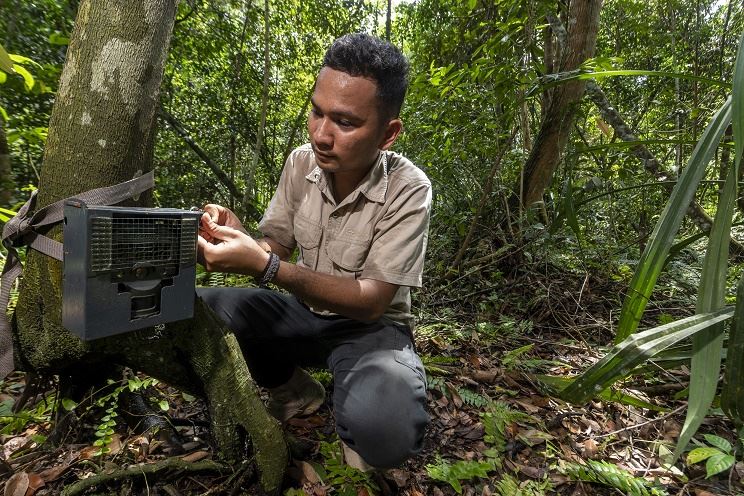
2016 | Migratory Raptor Monitoring
Held every spring and fall, this biannual event is timed to coincide with the migration of birds of prey from the temperate forests of China and Russia. Riau provides them with a warm and welcoming environment in which to breed and raise their chicks before returning north.
2017 | Asian Waterbird Census
RER hosts the Asian Waterbird Census (AWC) every year in January. Working in partnership with the Wetlands International-Indonesia Program and the Directorate General of Forest Protection and Nature Conservation of the Ministry of Environment and Forestry (MoEF), the AWC provides an indication of wetland health and supports conservation efforts for the entire Asia-Pacific region.
2019 | Sumatran Tiger Survey
In 2019, RER teamed up with Save the Indonesian Nature and Threatened Species (SINTAS) foundation to survey 517,500 ha of habitat in the Kampar Peninsula. The results helped to build up a clearer picture of wild tiger populations in the area, while also logging evidence of prey species and identifying potential threats to their survival.
2020 | Tiger Translocation
This important study assessed the Kampar Peninsula as a potential translocation site for the Sumatran tiger. Using species ecological niche factor analysis (ENFA) to model habitat suitability, the team found that approximately 60 percent of the study area would be viable for the reintroduction of a wild tiger population. The results of the survey were published in the Mammalian Biology journal in 2023.
2020 | Edge Effects Study
Since 2020, The Edge Effect Study has been investigating the diversity of mammal and bird species in areas separating the RER peat swamp forest and adjacent acacia plantations.
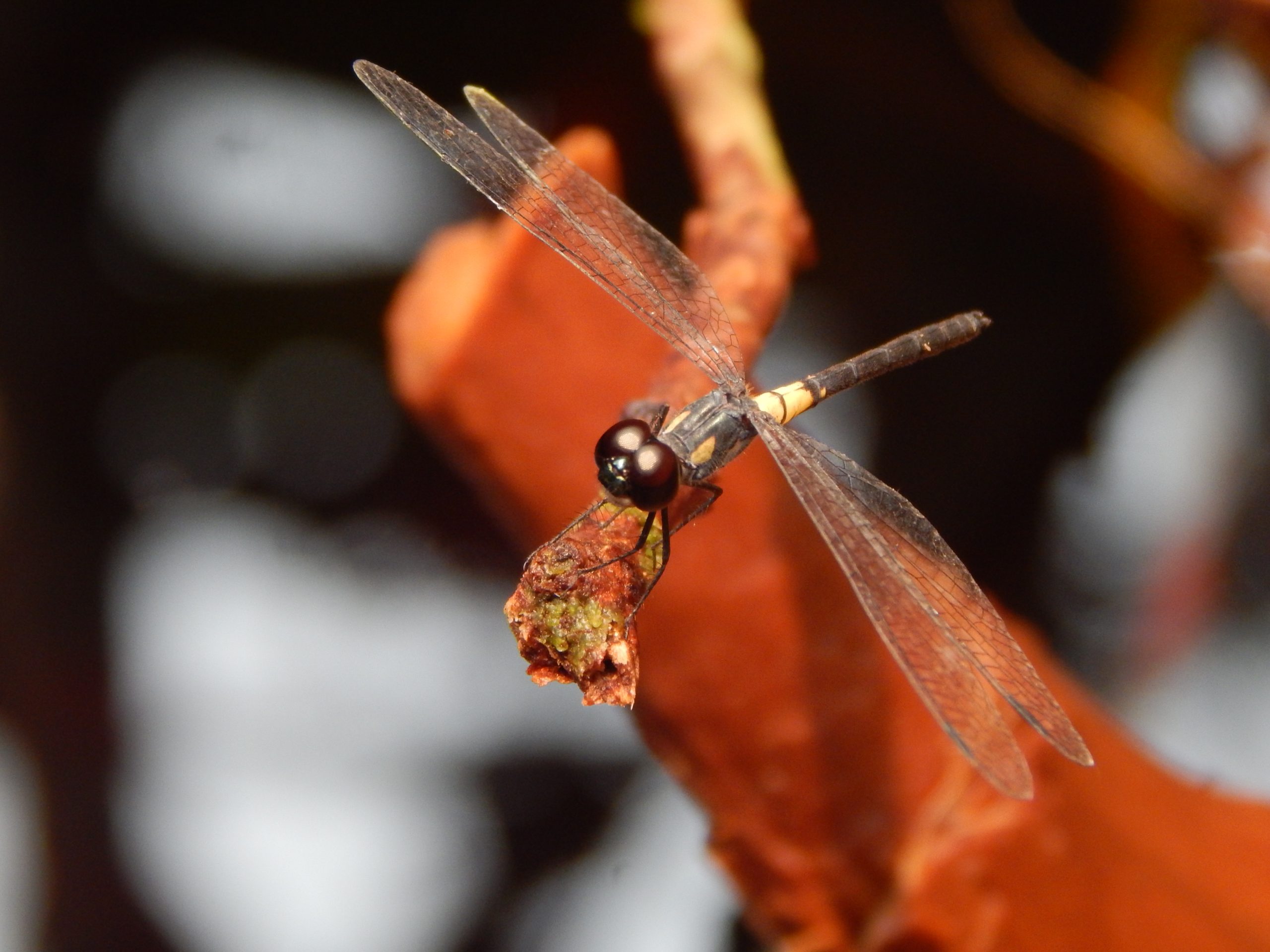
2020 – 2023 | Odonata Surveys
Though interrupted by the Covid-19 pandemic, this comprehensive baseline survey of dragonflies and damselflies of the Odonata order on the Kampar Peninsula combines data from January 2020 with three additional surveys conducted in February, May/June and (planned) September 2023. The surveys have thus far identified 94 species from 12 Families. 34 of these species are first time records for Indonesia, Sumatra and/or Riau province. 11 species are of conservation concern identified by the IUCN Red List as EN, VU or NT. These records have raised the total number of Odonata species in Riau from 88 to 123. 50% of the species are forest dependent as compared to more open, non-forest areas. 83 species have been identified in low pH (<6.5 pH) water environments which is typical in peat forests. The results of these baseline surveys will be used to develop a Dragonfly Biotic Index (DBI) as a surrogate indicator to assess and monitor the health of aquatic ecosystems because all species of Odonata are dependent upon freshwater for the development of their pre-adult stages (nymphs and larvae).
2021 | Flat-headed Cat
The RER ecology team conducted a camera trap survey of the Kampar Peninsula in search of the flat-headed cat. Eleven sightings included a mother with its cub, and provided the first official record of this Endangered and illusive species living in the RER.
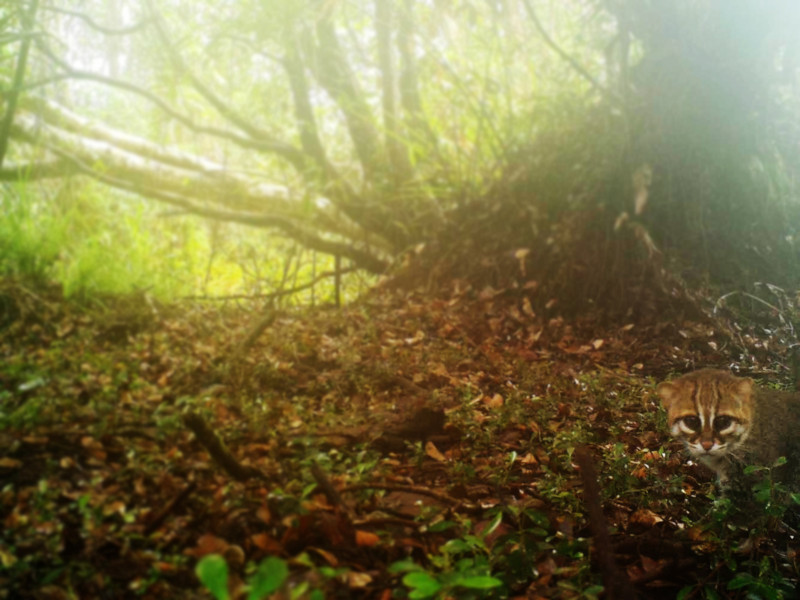
The team subsequently published their findings in the Oryx International Journal of Conservation, a quarterly peer-reviewed journal of biodiversity conservation, conservation policy and sustainable use.
2021 – 2023 | Mammal Diversity and Distribution
Conducted from October 2021 to January 2023 as part of a Kent University PhD research project, this study monitored mammal species on the Kampar peninsula in the Sangar, Turip/Serkap and Kutup basins. Using 192 camera traps and logging 28,982 nights of footage, the survey recorded a total of 56 species, including Sumatran tigers. The new data will be compared against data from 2015 and used to assess the trend in mammal species presence and abundance in a human-modified, production-protection landscape.
Located 140km southwest of Singapore, on the east coast of Sumatra, the Eco-Research Camp in Riau is in a world of its own. This 32-hectare site on the Kampar Peninsula is surrounded by one of Indonesia’s most precious peatland forest ecosystems. Here, scientists and researchers are able to study the unique biodiversity of Riau and formulate conservation strategies based on their findings. For visitors, the camp is a unique opportunity to study Indonesia’s wildlife and be immersed in nature. For species in the surrounding landscape, from blue-winged pitta to Sumatran tigers, the camp offers hope for the future.